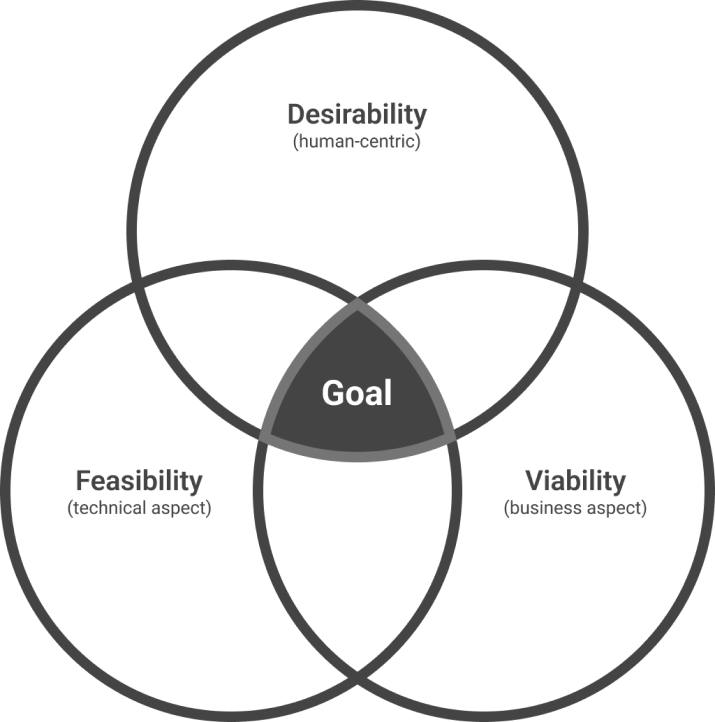Understanding Empathy in Design Thinking
Author

Date

Book a call
Let's start by understanding empathy to understand better how it plays a huge role in design! Simply put, empathy is the ability to see the world through other people's eyes, feel what they feel, and experience what they experience. It is often confused with sympathy, but there is a massive difference between both these terms. Let me explain.
Sympathy is more about one's ability to have or show concern for the wellbeing of another person, and it does not necessarily require one to experience things in a profound way that others experience; it often involves a lot of judgment, while empathy has none. Sympathy involves understanding from your perspective, while empathy involves putting yourself in the other person's shoes and understanding WHY they may have these particular feelings. Now that we have understood both these terms let's get down to how we implement it when designing a product and how we at GeekyAnts have been doing it to create creative and unique applications.
What is empathy in design?
Design is a vast field, ranging from product design, animation design, interaction design to virtual reality and automobile design. Empathy is an integral part of designs, and it is crucial for addressing the needs of any user/client or solving a problem that they might have. It allows an individual to see and feel a scenario from their audience's perspective. At GeekyAnts, we propagate our designers to empathize with the clients and their ideas to see things from their perspective. This allows a designer to understand the latent needs and difficulties his audience faces by observing their behavior. We have been following this strategy to build so many successful applications.
Empathy In Design Thinking
At GeekAnts, we stress on empathy as an important virtue and how it should be the first stage of the design thinking process, followed by defining, ideating, prototyping, testing the application, and putting it through multiple iterations to visualize our clients' ideas into aesthetic applications. During the empathizing phase, we as designers spend a lot of time getting to know the user and understanding their needs, wants, and objectives, which helps us understand the app's idea better and resonate with the audience on a more personalized level. This sometimes means observing and engaging with people to understand them psychologically and emotionally. Empathy is a fundamental approach in user-centric design. It has helped us set aside the assumptions about the world to gain insight into the app's audience and their needs to align the product with their requirements.
Need for empathy
Empathic design caters to real user needs rather than supposed "averages." One of the main objectives of the empathize stage is to identify the user needs and behaviors that are latent or
unarticulated. As designers who have delivered multiple successful projects, we feel that it is essential to distinguish between what people say and what they would do in a particular situation. With our extensive experience in app development, we have found that users may have habits or desires that they're not aware of, making it essential to observe the user in action to understand their requirements better.

Empathy is also crucial for successful digital-based businesses. The success of a product or service can be measured through three parameters- its desirability, feasibility, and viability. Desirability is the human-centric aspect of the product or service while feasibility is the technical aspect of the development, and viability measures the success of a product or service from a business standpoint.
It is not enough that the technology or means to develop a product or service is present (i.e., feasibility). These benefits can be generated from a business standpoint (i.e., viability). Users need to have a sense of desirability towards the solution. We can only fully understand and design a desirable product or service when people's needs, experiences, wants, and preferences are properly understood with the help of empathy.
How empathic design is applied
Let's take an example of how empathy influences design in a good or a bad manner and how we use it as a powerful tool to design attractive applications. In this example, we will discuss this by discussing a poorly designed departure board at the airport vs. a good one and how this affects those traveling.
Catching flights can be a very stressful experience for anyone. When you hit the check-in, you may already be worried about whether your baggage is overweight and whether a mega charge will hit you or you may even be running late as an added problem. After you have checked in, you look at the departure board to see if your flight is on time, and you may face difficulties locating your flight which can make anyone anxious…

Let's take this departure board into consideration where a few flights are listed in Mandarin, and it changes every five seconds to display other flight statuses. It can also be quite confusing for people who don't understand the language as it is not a universal language. From our experience, we can say that this is a poorly designed departure board because the designer did not empathize with their audience's emotional and psychological state making it a poor experience for travelers coming through this airport.

Now, let's look at this other departure board where all travelers' needs and psychological states were kept in mind while designing it. You can see how good design can have an impact on mental wellbeing as well as the experience that travelers have. As this board displays all the flights that are scheduled at a time in a categorized manner, the traveler can quickly locate his flight making his life less stressful, which is one of the indicators of good design.
The Takeaway
Empathy is one of the essential qualities for designers because it allows them to understand how their audience behaves and how they feel. To effectively address your customer's needs, you should understand their problems holistically after intense research. It's handy in tackling complex problems that are ill-defined or unknown by re-framing the problem in human-centric ways.
Hope this article has helped you understand the role of empathetic design and its effect on the user experience of an app.
Dive deep into our research and insights. In our articles and blogs, we explore topics on design, how it relates to development, and impact of various trends to businesses.





